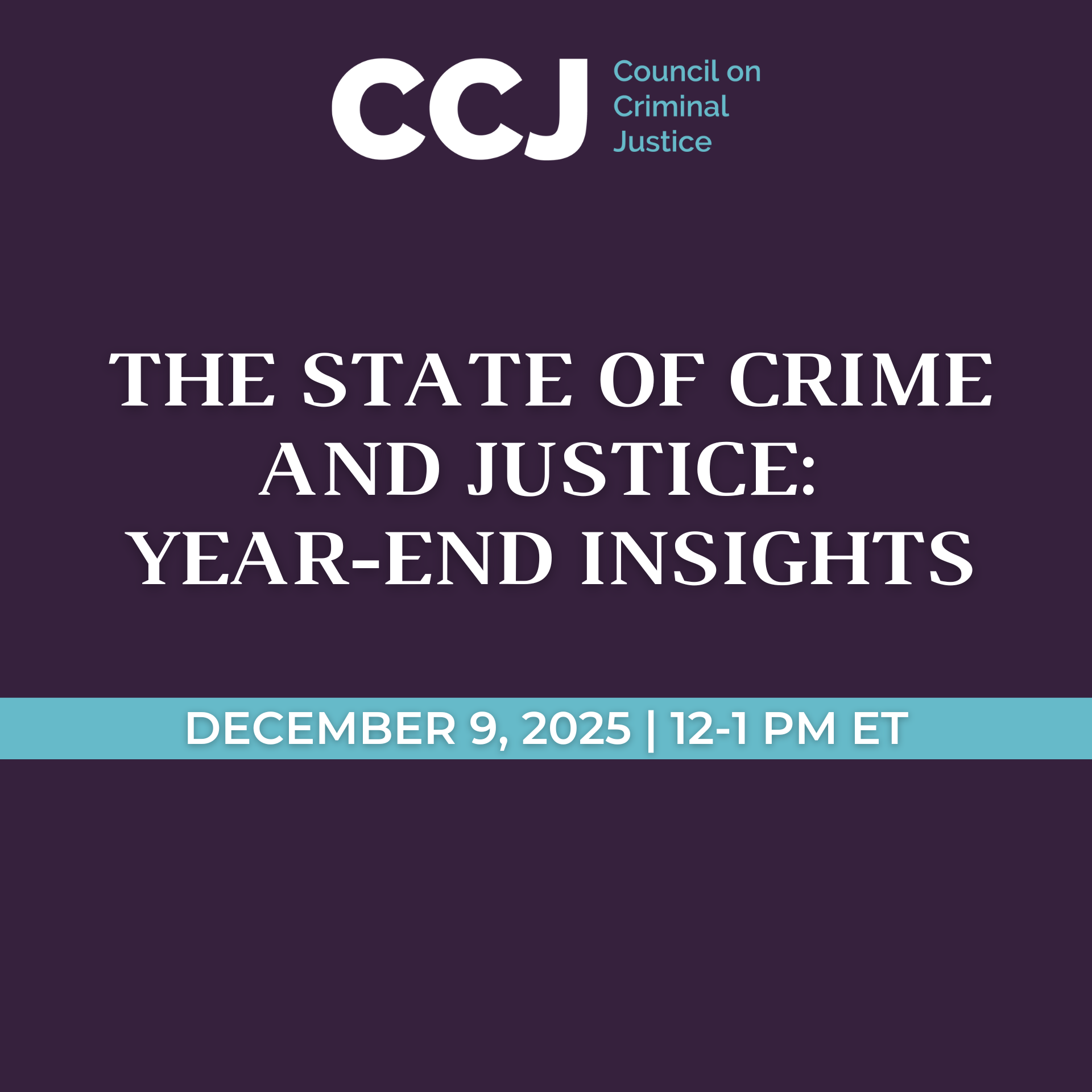In June, the Crime Trends Working Group convened in Washington, D.C., for an all-day discussion on the Justice Department’s infrastructure for reporting, accessing, and using nationwide crime trend data. The conversation featured a series of presentations on obstacles to implementing the Federal Bureau of Investigation’s National Incident-Based Reporting System (NIBRS), which replaced the nation’s nearly century-old Uniform Crime Reporting Program’s Summary Reporting System in 2021.
The group was welcomed by Amy Solomon, Assistant Attorney General, Office of Justice Programs, who encouraged the group to offer its best thinking about how to make crime reporting more timely, accurate, and complete. The group then heard from justice data expert Paul Wormeli and working group member Janet Lauritsen, Professor Emerita at University of Missouri-St. Louis. The two summarized the history of crime data reporting in the U.S. and outlined recommendations from the National Academies of Sciences, Engineering, and Medicine’s Panel on Modernizing the Nation’s Crime Statistics that issued reports on this subject in 2016 and 2018.
Members also heard from the group’s federal liaisons, Alex Piquero, Director of the U.S. Department of Justice’s Bureau of Justice Statistics (BJS), and Deputy Assistant Director Brian Griffith, of the Law Enforcement and Technology Services Branch of the FBI’s Criminal Justice Information Services Division. The two liaisons discussed the significant investments that have been made over the past two years to enhance data capacities, including several dozen new employees at BJS. Piquero and Griffith discussed efforts to accelerate NIBRS reporting and crime data publication, the need for standards, and the need to build robust partnerships with researchers and states in order to enhance the value of NIBRS.
The Working Group heard that progress is being made:
- All 50 states are now certified to report crime data via NIBRS, meaning all state UCR programs can then certify agencies within their domain to submit NIBRS data. States are certified once they submit incident-based data for six consecutive months and meet the following criteria:
- data submission error rate of 4 percent or less;
- the ability to submit the NIBRS offense codes and associated required data elements; and
- demonstration of the ability to submit, update, and delete incidents.
- 14,363 law enforcement agencies covering 3% of the population are now reporting.
- Some states continue to lag in law enforcement agency certification, among them New York (with 23% of law enforcement agencies certified), Florida (32%), Pennsylvania (41.6%), and California (54.7%).
Representatives of small and large law enforcement departments and state criminal justice agencies provided a comprehensive overview of the transition to NIBRS from their perspectives. They described obstacles that continue to challenge many states and local law enforcement agencies and identified practices that are helping accelerate the transition. Among the points made and discussed were the following:
- The decision to end reporting to the Summary Reporting System in 2021 left policymakers without a clear understanding of national crime trends at a time when concern about crime was reemerging as a major issue of public concern. Despite vigorous efforts to address the issue, the country still lacks timely and comprehensive crime statistics.
- Many local law enforcement agencies often see reporting to NIBRS as a cumbersome obligation, not something that benefits the agency itself or the constituencies they serve. This perception has delayed the transition to NIBRS and complicates efforts to sustain the new system, particularly among smaller law enforcement agencies.
- State analytic agencies and state UCR programs play a critical role in sustaining NIBRS reporting, but in many states they are greatly understaffed and underfunded.
- In most states, a significant number of different vendors provide records management systems (RMS) to various local and state law enforcement agencies. A lack of standards and a difficult process for adjusting technology specifications at the federal level make integrating RMS challenging.
- The federal government should do a better job collecting crime data from federal agencies with law enforcement powers, many of which currently fail to report crime data to NIBRS.
- The governance structure for adjusting NIBRS is onerous and slow. Recommendations for NIBRS implementation move too slowly through the FBI’s Criminal Justice Information Services (CJIS) Advisory Policy Board, the committee that provides user advice on the development and operation of CJIS division programs.
- The federal government has an opportunity to set standards and play a stronger coordinating role, as recommended by the National Academies of Sciences, Engineering, and Medicine.
- States that have transitioned to NIBRS most successfully did so by taking an active role in supporting local law enforcement. Successful approaches included requiring local law enforcement to report data by statute while also providing training and funding for local law enforcement agencies, providing free RMS for small law enforcement agencies, and setting standards and helping negotiate contracts with RMS vendors.
- Policymakers should not view the transition to NIBRS as a one-off event. There is an urgent need to enhance the value proposition of NIBRS. Local law enforcement agencies need to understand that reporting to NIBRS will benefit the country and lead to better policies and practices.
Working Group chair Rick Rosenfeld, Professor Emeritus at the University of Missouri St-Louis, described significant opportunities to improve the Crime Data Explorer, the FBI’s current public interface for its crime data. Working Group members discussed how researchers, policymakers, and the public have different crime data interests and need to be able to access NIBRS data in different ways. Rosenfeld also emphasized the need to make NIBRS data more timely.



